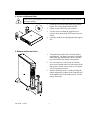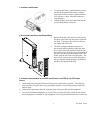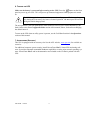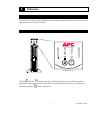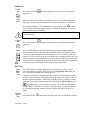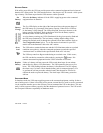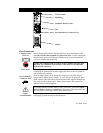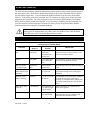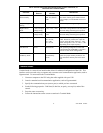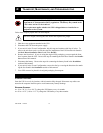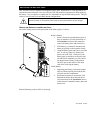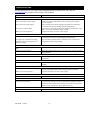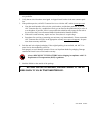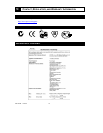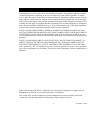
990-1060B 12/2005 16
TROUBLESHOOTING
Use the chart below to solve minor UPS installation problems. Refer to the APC web site
www.apc.com
for assistance with complex UPS problems.
PROBLEM AND POSSIBLE CAUSE SOLUTION
UPS WILL NOT TURN ON
ON button not pushed. Press the ON button once to power the UPS and the equipment.
UPS not connected to power supply. Check that the power cable from the UPS to the utility power supply is
securely connected.
UPS input circuit breaker tripped. Reduce the load on the UPS by unplugging equipment and resetting the
circuit breaker (on the back of UPS) by pressing the plunger in.
Very low or no utility voltage. Check the AC power supply to the UPS by plugging in a table lamp. If the
light is very dim, have the utility voltage checked.
Battery not connected properly. Check that the battery connector is fully engaged.
UPS OPERATES ON BATTERY ALTHOUGH NORMAL LINE VOLTAGE EXISTS
UPS input circuit breaker tripped. Reduce the load on the UPS by unplugging equipment and resetting the
circuit breaker (on the back of UPS) by pressing the plunger in.
Very high, low, or distorted line voltage.
Inexpensive fuel powered generators can
distort the voltage.
Move the UPS to a different outlet on a different circuit. Test the input
voltage with the utility voltage display.
BYPASS LED IS LIT, THE OVERLOAD LED IS LIT, AND THE FAULT LED IS LIT
Too many loads have been connected to the
UPS.
Remove all nonessential loads. Push the ON button to restore power.
External overload condition. Wait until overload condition passes. You may need to push the ON button
to reset the UPS.
FAULT LED IS LIT, THE OVERLOAD LED IS LIT, AND THE BYPASS LED IS NOT LIT
Overload condition. Remove all nonessential loads. Push the OFF button, then the ON button to
restore power.
FAULT LED IS LIT AND THE OVERLOAD LED IS NOT LIT
Internal UPS fault. Do not attempt to use the UPS. Turn the UPS off and have it serviced im-
mediately.
REPLACE BATTERY LED IS LIT
Weak battery. Allow the battery to recharge for at least twenty four hours. Then, perform a
self-test. If the problem persists after recharging, replace the battery.
Battery not connected properly. Check that the battery connector is fully engaged.
UPS BEEPS OCCASIONALLY
Normal UPS operation. None. The UPS is protecting the connected equipment.
UPS DOES NOT PROVIDE EXPECTED BACKUP TIME
Batteries are weak due to recent outage or
are near end of service life.
Charge the batteries. Batteries require recharging after extended outages.
They wear faster when put into service often or when operated at elevated
temperatures. If the battery pack is near the end of its service life, consider
replacing it even if the Replace Battery LED is not yet lit.
FRONT PANEL INDICATORS FLASH SEQUENTIALLY
UPS was shut down remotely. None. The UPS will restart automatically when utility power returns.



